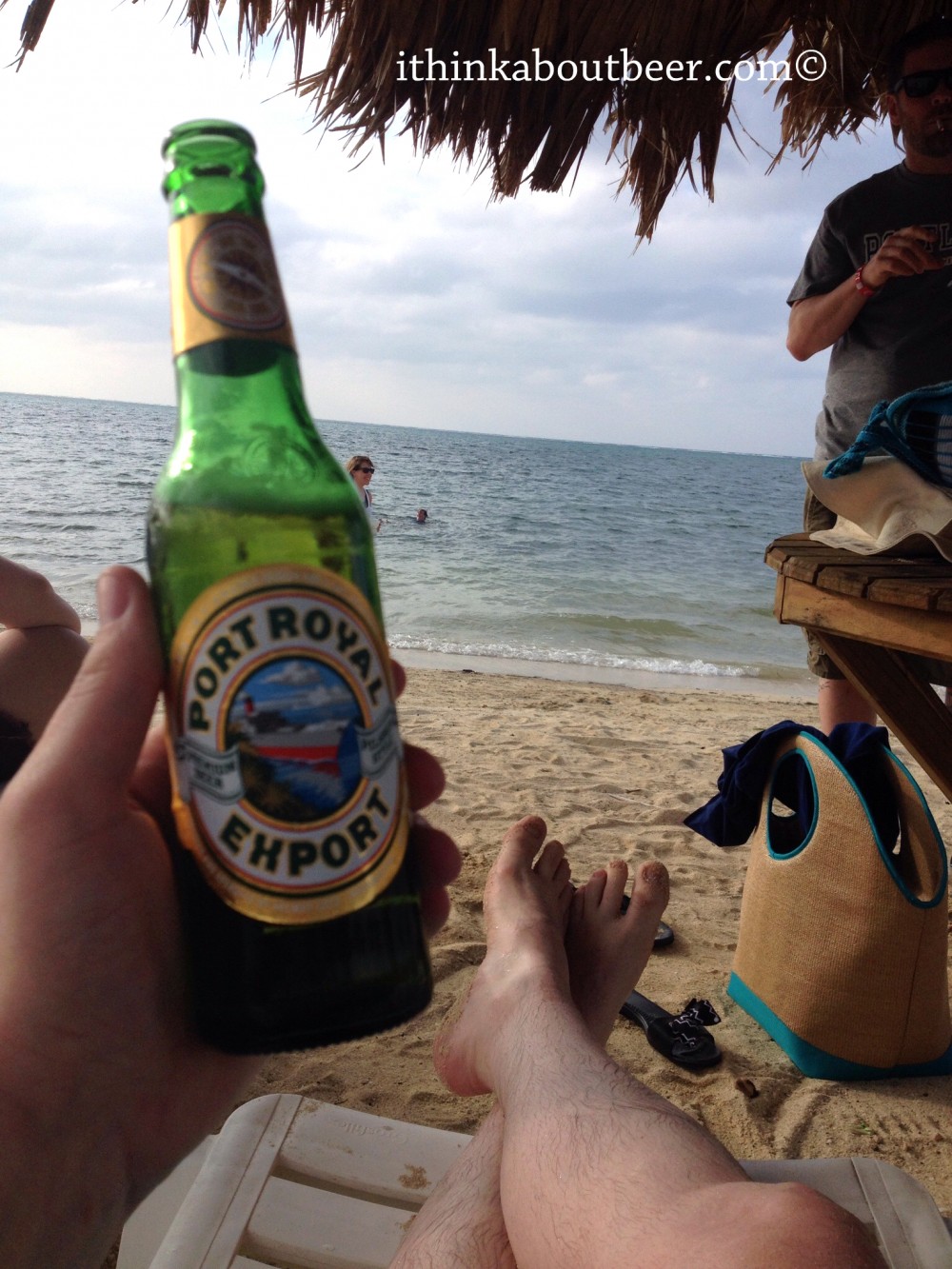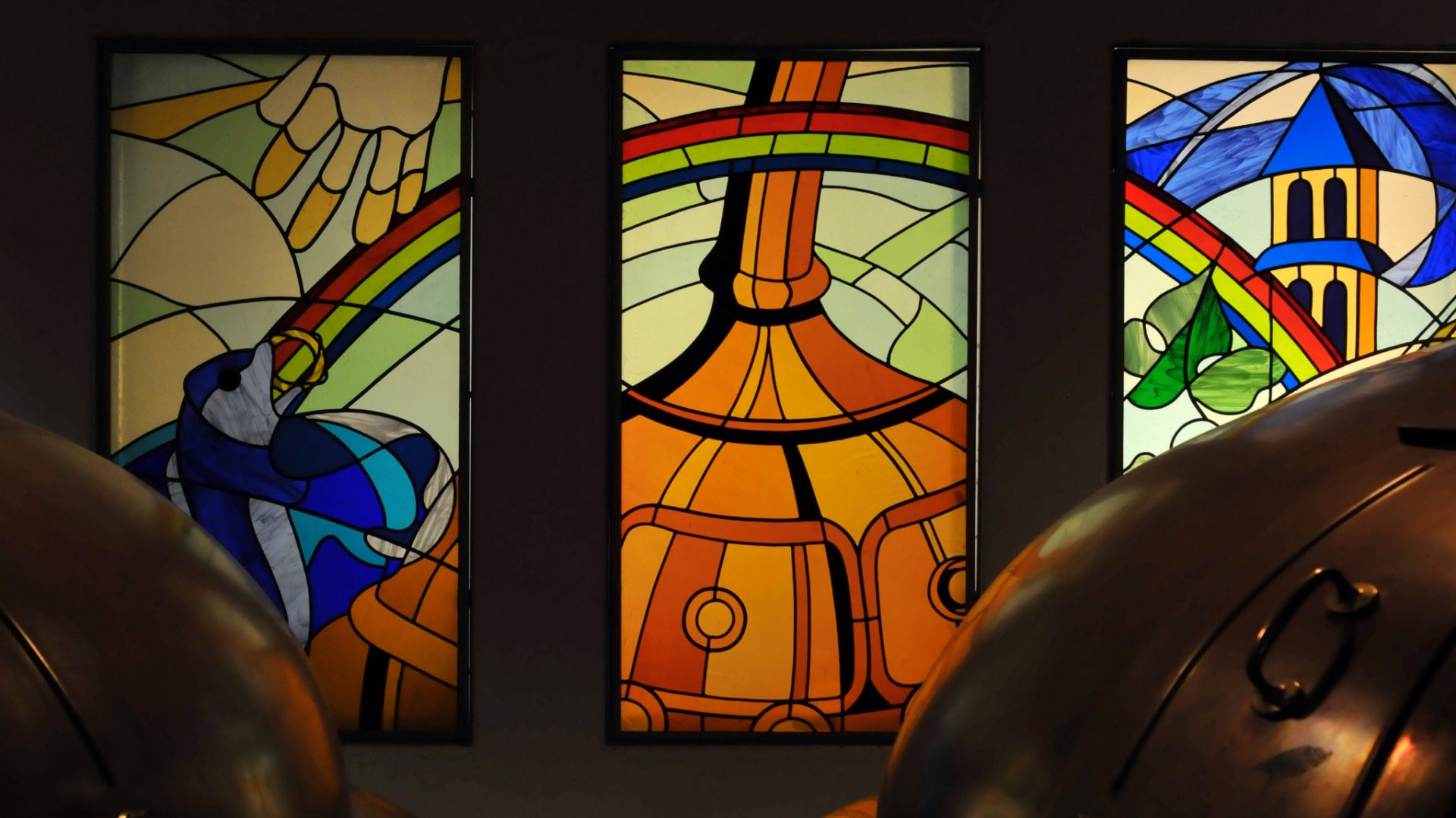
Part of going to any country is trying their local specialties and beverages. For me, that means beer. On my recent trip to Roatan, one of the bay islands of Honduras on the Caribbean side, I had an opportunity to try several Honduran beers brewed by Cerveseria Hondureña. They’re the large national brewery of Honduras and are part of the multinational brewing conglomerate, SAB Miller. While there may be more variety on the mainland, the island of Roatan seemed to only have these beers, plus a few “imports.”
The import list was fairly small, but some things you’d typically see: Miller Lite, Miller Genuine Draft, Heineken, Sapporo, Fosters, and oddly enough, Stroh’s. There were also a few Central and South American options: Kalik (Bahamas), Presidente (Dominican Republic), and Brahma (Brazil). Basically, you have your choice of German-style international Lagers. Prices ranged from about 300 Lempiras to 700 Lempiras, or about $15 to $35 a case. Cans were significantly cheaper than bottles, even on the same beer. The bottles were heavy gauge glass of the refillable type. I’m guessing this was the reason they cost more, especially if the return rate isn’t that great.
Why so many lagers? Well, this style is appropriate to the climate but it also has to do with the nature of Germany and its beers. If you look at the label of a “national” lager, you’ll often see a German name as the brewmaster or founder. A lot of this can be linked to two pieces of German history. In the last part of the 19th Century, Germany experienced a large wave of emigration during the countries unification that spread Germans around the world. When they left, they took their beer culture and recipes with them. This is why so many countries have lagers as their beer, and also how lagers came to America. Another major factor is that Germany has several long established brewing schools that generate a lot of brewing graduates, far more in fact than they can employee domestically. These German trained brewers then leave their country and get hired or start German style breweries around the world. In the case of Cerveseria Hondureña, you can see the very non-Hispanic name Helmut Lutz on the label of a Port Royal beer.

Port Royal
This was probably my favorite of the 4 Honduran beers. It was full-bodied and crisp with a good deal of flavor. I was concerned at first with the green bottle, but I’m guessing they use Miller’s hop extra technology which removes the particular compound in hops that skunk under UV light. Green bottles, if you’re unaware, are particularly bad at blocking UV which is why “skunky” is a common descriptor for many green bottled beers. And yes, the compound that is created when UV light strikes the hops is the same compound that skunks shoot to protect themselves. At no point did Port Royal have a skunky or develop a skunky aroma, even with all the times I was drinking it in the sun. The one downside was that the canned version of Port Royal seemed to be quite a bit blander than the bottled version.
Imperial was probably my second favorite of the local offerings. It was a bit lighter in body than the Port Royal but still enjoyably crisp and refreshing. It was also slightly less expensive than Port Royal and proved a good value in the can. As far as flavor differences between bottle and can, they were pretty minimal and nearly unnoticeable. This factor, along with the cheapness of the can, make it a great option.
While Salva Vida came in 3rd in my rankings, that’s not to say it’s a particularly bad beer. It was many of my friends’ beer of choice. For me though, it was a touch on the sweeter side. While I did enjoy one every now and then, I didn’t feel I really wanted to drink bottle after bottle. It just didn’t have the crispness I wanted for a repeat drinking hot weather beer. Salva Vida, which translates as “Live Saver,” is also available in cans, although I didn’t try one to see if there was a difference between the two packages. Graphically speaking, its label is a refreshing blue and quite sharp looking, and probably represents the best packaging of the 4 options.
This was my least favorite and one I’d recommend you avoid. It’s the equivalent of a light beer and is appropriately flavorless for that designation. It also sports a clear bottle, although I didn’t detect any skunking. You can also find Barena in the can. I did not try it out to see if it varied from the bottle any, although I’m not sure how it could be lighter or more watery, but I suppose it could actually just be water in the can. And while I am being a bit snarky, I found this beer to be offensively flavorless and obnoxiously light. Avoid it if you want to actually taste something.
The Verdict
 Unless you’re traveling to a specific “beer” culture country, you should be prepared to drink mass-produced lagers. But if beer travel was your intent, you’d not pick a country like Honduras. You pick a place like this for the sun and sea. I’m a big believer in experience playing a large part in how you perceive a beer or any other product for that matter. And when that experience is a Port Royal in your hand while looking out at the Caribbean, that beer is going to taste really good.
Unless you’re traveling to a specific “beer” culture country, you should be prepared to drink mass-produced lagers. But if beer travel was your intent, you’d not pick a country like Honduras. You pick a place like this for the sun and sea. I’m a big believer in experience playing a large part in how you perceive a beer or any other product for that matter. And when that experience is a Port Royal in your hand while looking out at the Caribbean, that beer is going to taste really good.
If your beer selection is that important to you, I suggest you bring your own supply. You may have to pay some tax/fee as the limit is 5 liters duty-free. If you do, you’ll want to have a secure way to get your beer safely there. You can always build a beer travel case. It holds nearly a full case worth of volume with space for various sized bottles. It’ll keep everything safe and unbroken. There’s nothing worse than arriving at your destination and having a suitcase full of broken glass and beer soaked clothes. Most importantly, when full, it’s within airline weight/size limits. Here are instructions to one that I built.






13 thoughts on “The Beers of Honduras – A Traveler’s Guide”
Great history lesson along with your beer recap. Really enjoy the extra context!
Thanks! History and context is my jam, like Google stats is your jam. We do what we’re good at.
Well written post on what looked like a great trip. It’s to bad they didn’t have anything exciting beer wise. I guess I am glad that my last two warm destinations were Hawaiian Islands as there is s great beer culture there.
Yeah. I was hoping that craft brewery I found was still open. But it went out of bizz 7 years ago!
It’s amazing the website is still active! You would think it would go down if they are not paying for hosting or for their Web address.
I’ve lived on Roatan for 10 years (from Texas). I have a business that sells beer to tourists (and a few locals), so I go through a reasonable amount of beer.
I drink Imperial, because to me it is the most full flavored beer of the bunch. I hate light beer, preferring Guinness to everything else, and if it was cheap enough, that’s all I would drink. Imperial has its problems however. I find that there is often a large difference in taste from one bottle to the next. I can’t explain it, but certain bottles offer a MUCH better flavor than the next bottle. I’d like to know how that’s possible, but it’s one of life’s little mysteries.
Port Royal is my second choice, not because I like it, but because Salva VIda and Barena are so bad. Port Royal is OK, but it does have an after taste I don’t like. It is THE tourist beer. It’s the beer I initially drank after moving to the island, but it couldn’t keep my loyalty. I had to switch.
Salva Vida is the undisputed favorite beer of the locals, not so much with the tourists. The flavor varies bottle to bottle and sometimes there is a decidedly skunky after taste. The worst after taste of the bunch.
I believe Barena is the rinse water left over from cleaning out the returnable Imperial, Port Royal and Salva Vida bottles. Need I say more?
I should have mentioned that I worked at the 4 breweries in New York in the 70’s, as a machine operator during the summer to get the money for college tuition. The plant people NEVER drank canned beer. Never! They drank bottled beer if they were too lazy to go to the tap room (before the pasteurizer). Guys from the can line would travel to the bottle lie to get a beer. That says something.
At the Schaefer Brewery in Brooklyn, the can plant was next door and a hole in the separating wall allowed freshly manufactured cans to go directly into the canning line. Very efficient! Periodically, there would be some problem on that line and new empty cans would end up getting crushed, thrown on the floor, etc. Picking up and inspecting those cans evidenced that the plastic coating on the interior was still not completely solidified. That coating is there to keep the beer from contacting the aluminum, as aluminum is a very active metal and should not contaminate food. At the very least, that chemical coating imparts a flavor to the beer that isn’t there in a bottle.
I never drink canned anything. Never! My wife doesn’t own an aluminum pot, as I know aluminum is a suspect in Alzheimer’s research, and my college chem classes identified aluminum toxicity. Anyone that thinks a canned beer is better than the bottled beer may be enjoying the chemical reaction with the beer and the coating. Think about it.
Glad to read you enjoyed my dad’s beer while in Honduras. He is now happily retired back in Germany, but often “checks up ” on his “baby” Port Royal.
Cheers!!
I enjoyed your article on the Honduran beers. You’re a good writer. It flows. No pun intended.
Looking forward to my trip now more than ever. God bless travel, good food, and above all beer.
Thanks man.
Thanks for the kind words! Enjoy your trip.